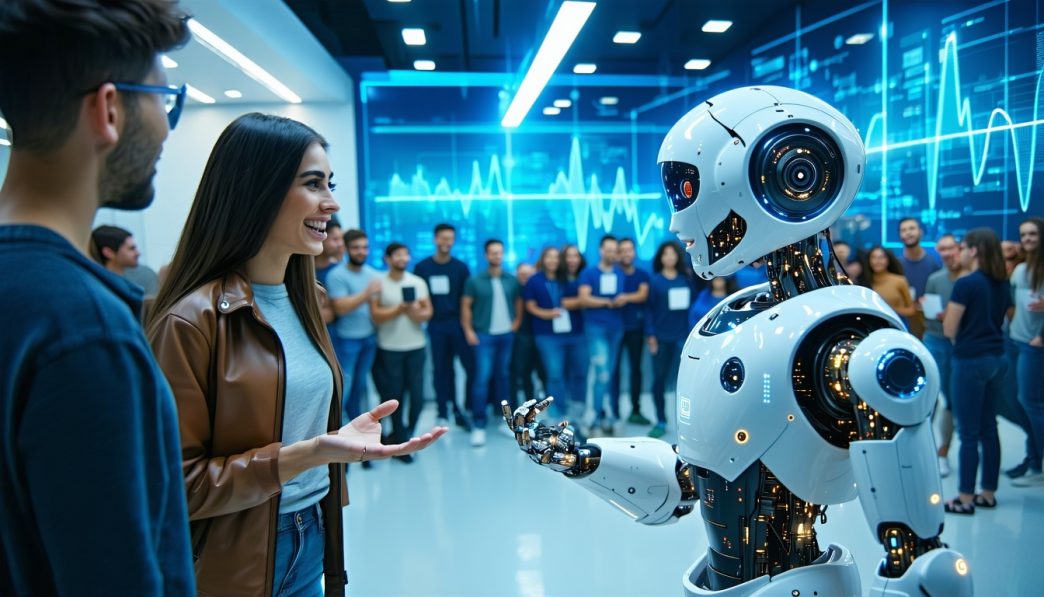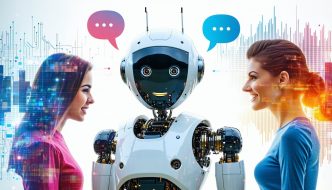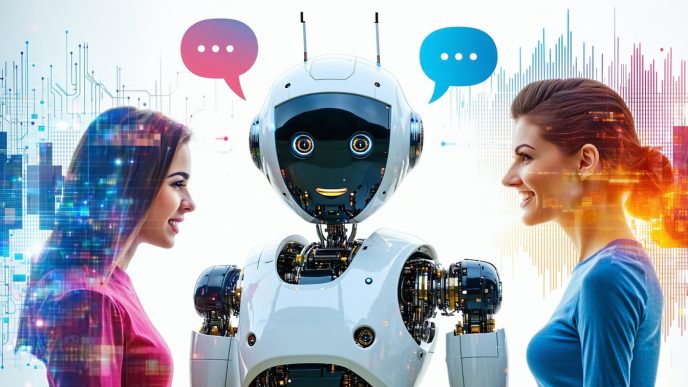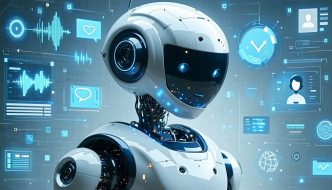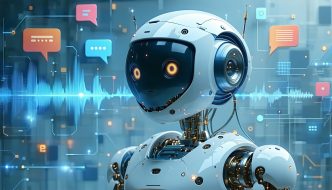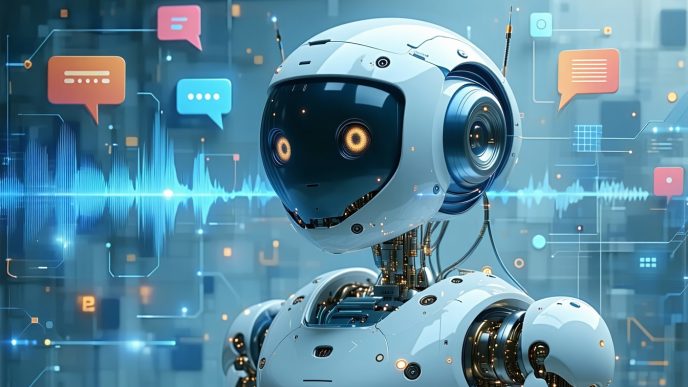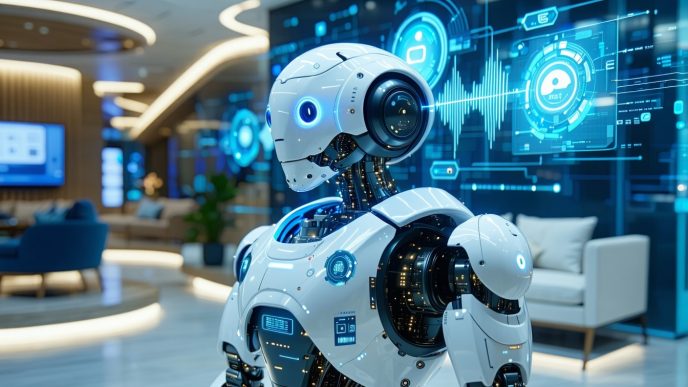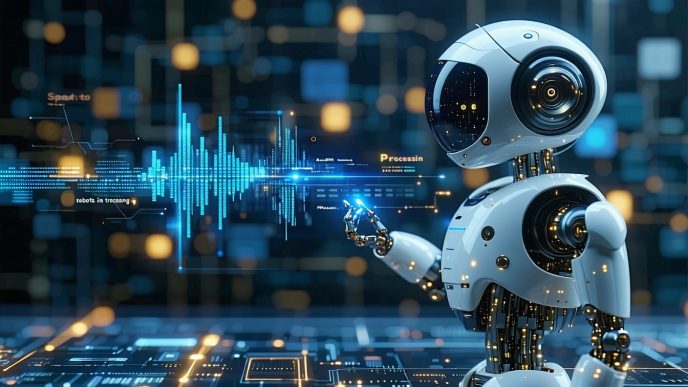Evolution of Voice Interaction with Robots
The evolution of voice interaction with robots has seen significant advancements over the years, transforming the way humans communicate with machines. This section will cover past developments in voice-controlled robots and the current state of voice interaction technology.
Past Developments in Voice-controlled Robots
The history of voice-controlled robots began in the late 20th century, with basic command recognition systems that could respond to simple spoken phrases. Early prototypes were limited to pre-defined commands and often struggled with background noise and varied speech patterns.
As technology progressed, the integration of natural language processing (NLP) improved the capabilities of robots, allowing for more complex interactions. The introduction of voice recognition systems, such as those detailed in our article on robot voice recognition and nlp, enabled robots to understand a wider range of commands. These systems relied heavily on user training, requiring users to repeat commands multiple times to improve recognition accuracy.
The following table highlights key milestones in the development of voice-controlled robots:
| Year | Development |
|---|---|
| 1980 | First voice recognition systems introduced |
| 1990 | Basic NLP algorithms developed |
| 2000 | Introduction of speech recognition in consumer electronics |
| 2010 | Rise of AI-powered voice assistants (e.g., Siri, Alexa) |
| 2020 | Improved contextual understanding in robots |
Current State of Voice Interaction
Today, voice interaction technology has advanced to a level where robots can process natural language and interact more fluidly with users. Modern voice-controlled robots are equipped with sophisticated NLP systems that enable them to comprehend context, recognize accents, and deliver more accurate responses. As discussed in our article on natural language understanding in robots, these systems analyze user input to extract meaning and intent.
The accuracy of speech recognition has also improved significantly, with advancements in machine learning enhancing voice command accuracy in robots. Current robots can engage in basic conversations with users, making them suitable for various applications, from domestic chores to caregiving. In terms of conversational abilities, see our article on conversation capabilities in robots for further insights.
As voice-controlled robots become more integrated into everyday life, they are evolving from simple command-response machines into intelligent assistants capable of understanding and delivering personalized responses. The ongoing desire to make these interactions feel more natural continues to drive innovation in the field.
For families and tech enthusiasts eager to learn about the future of voice interaction with robots, understanding these developments can provide a clear view of how robots are set to integrate into smart home ecosystems and beyond.
Understanding Natural Language Processing
Natural Language Processing (NLP) is a critical component that allows robots to understand and respond to human voice commands. This technology bridges the gap between human language and machine understanding, enabling robots to interact more naturally.
How Robots Understand Voice Commands
Robots utilize a combination of speech recognition, natural language understanding, and response generation to process voice commands. The following steps outline how the process typically works:
-
Voice Recognition: The robot first captures the user’s spoken input through microphones. This audio data is then converted into text using speech to text processing in robots.
-
Understanding Context: Once the speech is transcribed, NLP algorithms analyze the text to determine the intent and context behind the command. This involves breaking down sentences, identifying keywords, and understanding syntactic and semantic structures, a process known as natural language understanding in robots.
-
Generating Responses: After interpreting the command, the robot formulates a response. This response generation uses a combination of predefined responses and machine learning to create appropriate answers.
The table below illustrates the essential components in the voice command process:
| Component | Description |
|---|---|
| Speech Recognition | Converts spoken language to text |
| Natural Language Understanding | Analyzes text for intent and context |
| Response Generation | Creates a relevant and coherent verbal reply |
Challenges of Natural Language Processing
Despite advancements in NLP, various challenges remain in enhancing the efficiency of voice interaction in robots. These challenges include:
-
Understanding Accents and Dialects: Robots often struggle to understand various accents, which can lead to inaccuracies in interpreting commands. Research on training robots to understand accents is ongoing.
-
Ambiguity in Language: Human language is often filled with ambiguities. Phrases can have multiple meanings depending on context. This challenge necessitates continued improvements in contextual analysis.
-
Voice Command Accuracy: Ensuring high accuracy in command recognition is vital for effective interaction. Researchers focus on improving voice command accuracy in robots through enhanced algorithms.
-
Conversational Flow: Maintaining a natural flow during conversations is another hurdle. Advances in conversation capabilities in robots aim to address this issue by developing more sophisticated dialogue systems.
These ongoing challenges will shape the future of voice interaction with robots. Improvements in NLP will lead to more intuitive responses and interactions, benefiting users looking to incorporate voice-controlled robots into their daily lives. For insights into how robot voice interfaces compare to applications, explore our article on robot voice interfaces vs apps.
Future Capabilities of Voice-controlled Robots
As technology advances, the capabilities of voice-controlled robots are set to improve significantly. The future of voice interaction with robots holds exciting possibilities, offering enhanced contextual understanding, improved conversational ability, and personalized responses.
Enhanced Contextual Understanding
Future voice-controlled robots will possess an improved ability to grasp context in conversations. This attribute will allow robots to consider previous interactions and environmental factors when interpreting voice commands. For instance, if a user asks a robot to “turn down the lights,” the robot will be able to determine which room the request pertains to, based on earlier commands or current location.
| Contextual Factors | Examples |
|---|---|
| User History | Remembering user preferences and past interactions |
| Environmental Cues | Adjusting based on room settings or activities happening |
| Situational Awareness | Responding differently based on the time of day or ongoing tasks |
This enhanced contextual understanding will bridge the gap between mere command recognition and engaging conversations. More on how robots interpret voice commands can be found in our article on robot voice recognition and nlp.
Improved Conversational Ability
The conversational abilities of robots will significantly enhance their interactions. Future robots will be designed to handle longer dialogues, maintaining context over several exchanges, thereby creating a more natural conversational flow.
Key features of improved conversational abilities include:
- Back-and-forth Dialogue: Engaging in a follow-up conversation that feels natural.
- Clarification Requests: Asking for further details if the initial command is ambiguous.
- Topic Management: Transitioning smoothly between different subjects without losing coherence.
These advancements will create a more engaging user experience. For a deeper look at these evolving capabilities, refer to our article on conversation capabilities in robots.
Personalized Responses
Future voice-controlled robots will also focus on delivering personalized responses tailored to individual users. By recognizing voices and preferences, robots can make interactions feel more intimate and relevant.
The personalization features may include:
- Voice Recognition: Identifying different users in a household and customizing responses.
- Preference Settings: Adjusting behaviors and commands based on user history and liking.
- Unique Personalities: Developing distinct conversational styles that reflect user preferences.
These advancements in individualized responses will allow robots to build rapport with users, enhancing the overall experience. More information on how robot responses can be tailored can be found in our article on robot responses and personality design.
The future capabilities of voice-controlled robots promise to create a more interactive and engaging experience for users, transforming the way they communicate and interact with technology.
Integration with Smart Home Ecosystem
The integration of voice-controlled robots within the smart home ecosystem represents a significant leap in how households function. As these robots evolve, their ability to interact with other smart devices and automate tasks continues to enhance.
Interacting with Other Smart Devices
Voice-controlled robots are becoming adept at connecting and communicating with various smart home devices. This interaction enables seamless control over different functions within the home. For example, individuals can use their voice to instruct the robot to adjust the thermostat, turn on lights, or even lock doors.
The communication protocols used by these robots facilitate this interaction. Popular protocols like Zigbee and Z-Wave allow for interoperability among devices from different manufacturers. In a smart home, this means that voice commands can trigger a series of actions across multiple devices, creating an interconnected environment.
| Command | Device Interaction |
|---|---|
| “Turn on the lights” | Smart bulbs |
| “Adjust the thermostat” | Smart thermostat |
| “Play music” | Smart speakers |
| “Lock the door” | Smart locks |
These capabilities not only enhance convenience but also contribute to energy efficiency. For more on how robots interpret voice commands, refer to the article on robot voice recognition and NLP.
Automating Tasks within the Home
The future of voice interaction with robots will likely see significant advancements in task automation. As robots become capable of understanding and executing more complex commands, they will be able to handle a variety of tasks without human intervention.
For instance, robots could automate daily chores such as vacuuming, dishwashing, and laundry. By simply stating a command, users can initiate these tasks, freeing up time for other activities. This not only improves daily life but also supports a more efficient household routine.
| Task | Automation Capability |
|---|---|
| Vacuum cleaning | Scheduled or on-demand |
| Dishwashing | Start or stop via voice |
| Laundry | Start washing machine by voice |
| Watering plants | Schedule irrigation |
Additionally, as machine learning algorithms improve, these robots will learn user preferences and optimize their performance over time, resulting in a tailored home assistant experience. For insights into robot interactions, explore the article on natural language understanding in robots.
The combined potential of voice-controlled robots and smart home devices lays the groundwork for a future where seamless interaction and automation become the norm in daily life.
Enhanced Learning and Adaptability
The future of voice interaction with robots hinges on their ability to learn and adapt. Enhanced learning mechanisms, particularly through machine learning, are paving the way for voice-controlled robots to evolve in functionality and user experience.
Machine Learning in Voice-controlled Robots
Machine learning plays a key role in how robots process voice commands and improve their performance over time. Through extensive datasets and algorithms, robots can analyze spoken language patterns and user behavior. This analysis helps in refining their response capabilities and understanding of commands.
The process can be broken down into various components, as illustrated in the table below:
| Machine Learning Component | Description |
|---|---|
| Data Collection | Robots gather voice samples and user interactions to build a database for learning. |
| Pattern Recognition | Algorithms identify common speech patterns and linguistic nuances. |
| Feedback Loops | Continuous feedback from users helps the robot adjust and improve accuracy. |
| Contextual Learning | Robots learn from previous interactions to provide relevant responses. |
To understand the intricacies of how these technologies work in relation to voice recognition, you can explore our article on robot voice recognition and nlp.
Continual Improvement through User Interaction
User interaction significantly influences the evolution of voice-controlled robots. Each interaction serves as a learning opportunity, allowing robots to refine their comprehension and response strategies based on real-world usage.
Key aspects of how interactions facilitate learning are outlined in the table below:
| Interaction Aspect | Impact on Learning |
|---|---|
| Repeated Commands | Regularly used phrases help robots recognize command variations and improve accuracy. |
| User Feedback | Users can provide immediate feedback, which is used for training algorithms to enhance performance. |
| Adaptation to Accents | Robots adjust to different accents over time, improving their voice command accuracy in robots. |
| Personality Development | Interaction shapes the design of robot responses, leading to more natural and engaging conversations, as discussed in robot responses and personality design. |
Through these evolving capabilities, the interaction between humans and robots becomes more intuitive. The continual feedback and learning mechanisms ensure that voice-controlled robots become more aligned with user needs, fostering a seamless integration into daily life. Exploring related topics can further enhance understanding, such as natural language understanding in robots and conversation capabilities in robots.
Advances in Multilingual Support
The evolution of voice interaction in robots has led to significant advancements in multilingual support. As voice-controlled technology becomes more integrated into society, breaking language barriers and providing global accessibility is essential.
Breaking Language Barriers
One of the key developments in the future of voice interaction with robots is the enhanced capability to understand and respond to multiple languages. This change allows robots to communicate effectively with users from different linguistic backgrounds. By incorporating sophisticated algorithms, voice-controlled robots can parse through various languages and dialects, ensuring clearer communication and interaction.
The chart below outlines the number of languages that current voice-controlled systems can recognize and respond to, demonstrating their growing ability to break down language barriers:
| Voice System | Supported Languages |
|---|---|
| Basic Systems | 5 – 10 |
| Advanced Systems | 15 – 20 |
| Future Projections | 30+ |
Integrating advanced voice recognition and natural language processing (NLP) technologies enables robots to understand nuances, slang, and regional accents. For more insight into how these robots achieve this, refer to our article on robot voice recognition and nlp.
Providing Global Accessibility
With multilingual support, robots can offer services that cater to a broader audience, promoting inclusivity in technology. This feature opens opportunities for diverse populations, as users can interact in their preferred language, making technology more user-friendly.
Accessibility is vital, especially in households where multiple languages are spoken. Robots that can understand commands in various languages prioritize user comfort and convenience. This capability is especially valuable in educational settings, where language barriers can affect learning outcomes. For an understanding of how robots process speech, visit our article on speech to text processing in robots.
As future models evolve, the goal is to not only recognize languages but also to develop conversational fluency. This involves training robots to pick up on cultural references and idiomatic expressions, enhancing user interaction and satisfaction. Exploring the implications of this improvement can be found in our discussion on natural language understanding in robots.
The advances in multilingual support will continue to shape how voice-controlled robots enhance everyday life, ensuring they are accessible and effective for a global audience.
Ethical Considerations in Voice Interaction
As voice-controlled robots become increasingly integrated into daily life, ethical considerations surrounding their use and functionality emerge. Two key areas of concern are privacy and data security.
Privacy Concerns
Voice interaction technology relies heavily on data collection to function effectively. Robots continuously listen for commands, which can raise privacy issues among users. Recording and storing voice data may lead to unauthorized access, resulting in potential misuse or breaches of personal information.
To provide clarity, the following table outlines common privacy concerns regarding voice-controlled robots:
| Privacy Concern | Description |
|---|---|
| Listening Period | Many devices listen continuously, which can result in unintentional recordings. |
| Data Storage | Voice data may be stored indefinitely, increasing vulnerability. |
| Third-party Sharing | User data could be shared with third parties, impacting user privacy. |
| Lack of Transparency | Users may be unaware of how their data is used or stored. |
Addressing these concerns requires transparency from developers and manufacturers regarding data usage and implementing measures to protect users’ private information.
Data Security Measures
To mitigate privacy concerns, robust data security practices must be established. These measures ensure that users’ information is protected from unauthorized access or cyber threats. Below are several key data security measures essential for voice-controlled robots:
| Security Measure | Description |
|---|---|
| Encryption | Utilizing encryption for stored and transmitted data to safeguard against breaches. |
| User Control | Allowing users to manage their data, including the ability to delete recordings or opt-out of data collection. |
| Frequent Updates | Implementing regular software updates to address vulnerabilities and improve security. |
| Secure Connections | Ensuring that all communications between the robot and the server are secure. |
Developers of voice-controlled robots must prioritize the implementation of these security measures to foster user trust and ensure that the future of voice interaction with robots remains secure and ethical. For further exploration of related technologies, visit our articles on robot voice recognition and nlp and natural language understanding in robots.
The Impact on Daily Life
Voice-controlled robots are steadily integrating into daily life, transforming how household chores are managed and enhancing communication across various age groups. As these technologies advance, they promise to streamline everyday tasks and foster better social interactions.
Transforming Household Chores
Voice interaction has revolutionized the way household chores are performed. With the ability to comprehend and execute voice commands, robots are streamlining various tasks for users. From vacuuming to dishwashing, these devices can now operate with greater efficiency and autonomy.
In the following table, we summarize the impact of voice-controlled robots on common household chores:
| Household Chore | Traditional Method | Impact of Voice-Controlled Robots |
|---|---|---|
| Vacuuming | Manual operation | Automated cleaning with voice commands |
| Dishwashing | Manual loading and unloading | Load and pre-rinse cycles with instructions |
| Trash disposal | Manual handling | Notify when to take out the trash |
| Grocery shopping assistance | Manual list creation | Voice-activated lists and reminders |
By facilitating these chores, robots allow users to focus on more meaningful interactions or leisure activities. As more homes adopt this technology, the efficiency of household management is expected to rise, paving the way for a more connected and automated living environment.
Facilitating Communication for Different Age Groups
Voice-controlled robots are also breaking down communication barriers, particularly for older adults and young children. These robots can serve as conversational partners, helping reduce feelings of loneliness and social isolation among elderly individuals. By providing reminders for medication or engaging in casual conversation, these devices offer valuable companionship.
For children, voice interaction serves as an educational tool, assisting them in learning new concepts through engaging and interactive dialogue. The ability to understand and respond to simple questions creates an environment where children can safely explore ideas through conversations.
The following highlights the benefits of voice interaction for various age groups:
| Age Group | Communication Benefits |
|---|---|
| Seniors | Companionship, reminders |
| Children | Interactive learning, fun engagement |
The future of voice interaction with robots looks promising, making daily life more convenient and socially enriching. For insights into how robots decode verbal instructions, explore robot voice recognition and nlp and natural language understanding in robots.


